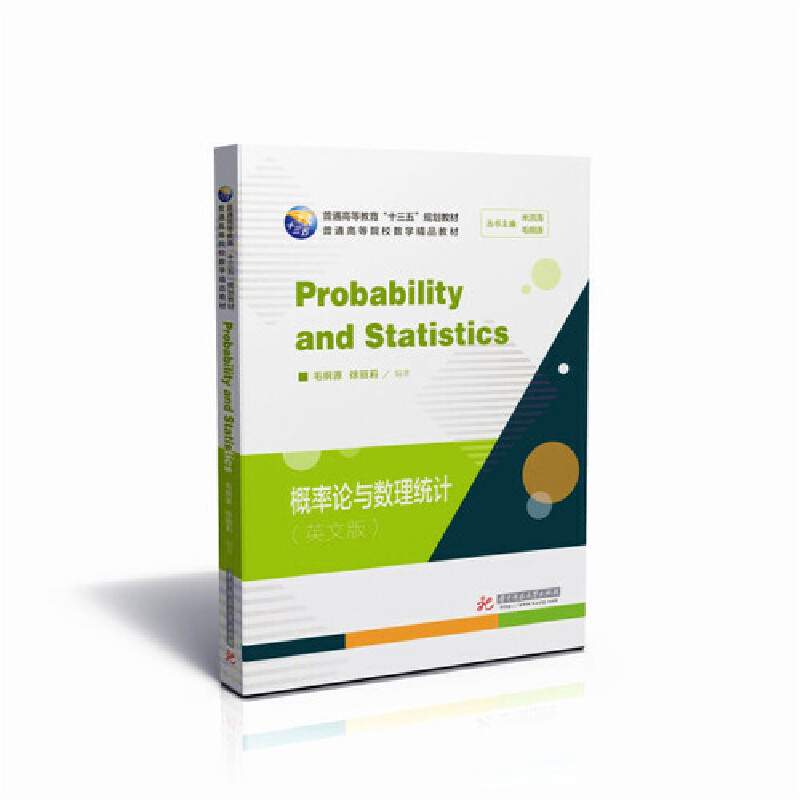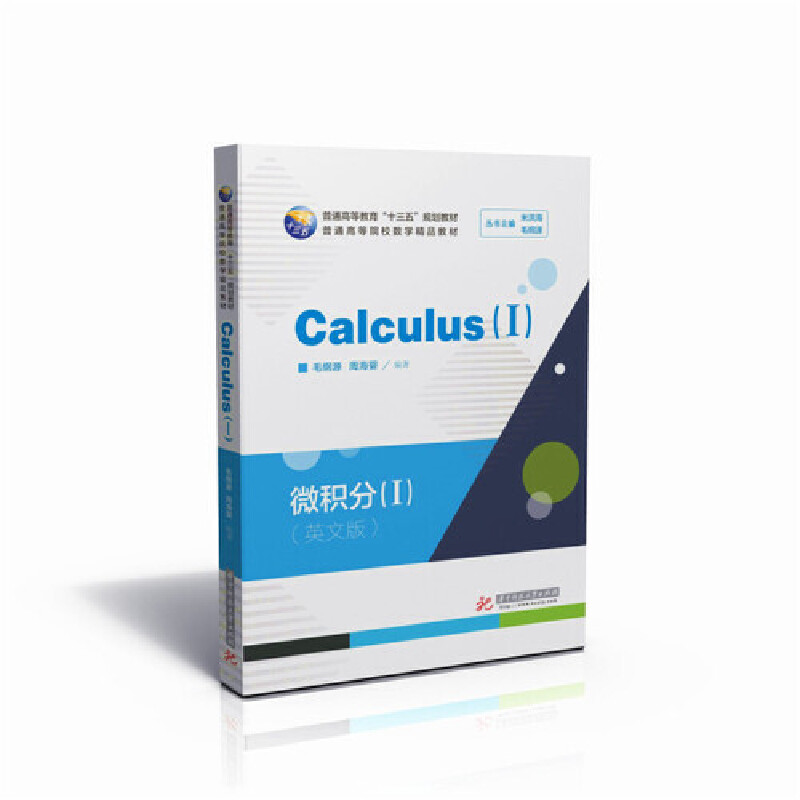工程测量学(英文版) / 高等学校测绘工程系列教材
¥49.00定价
作者: 尹晖,王建国主编
出版时间:2022-02
出版社:武汉大学出版社
- 武汉大学出版社
- 9787307226180
- 1-1
- 455625
- 63230958-9
- 平装
- 16开
- 2022-02
- 240
- 测绘工程
- 本科
作者简介
内容简介
本书是为《工程测量学》全英文教学出版的英文教材。工程测量学是测绘工程专业的一门核心必修课,
本书根据工程建设中的规划设计、建筑施工、运营管理三个阶段对测量工作的不同要求展开叙述,共分为十二章。内容覆盖了工程测量学所涉及的工程建设规划设计阶段各类地形信息的获取与应用、工程控制网的质量分析与优化设计、工程建设中的施工测量与放样方法、工程建设与运营管理中的变形监测技术与数据处理等。具体章节为:第一章绪论;第二章工程建设规划设计阶段地形图的应用;第三章线路测量及土方量计算;第四章水下地形测量;第五章工程控制网质量分析及优化设计;第六章施工放样技术;第七章平面曲线测设;第八章桥梁和大坝测量;第九章隧道测量;第十章竖井联系测量与陀螺经纬仪;第十一章工程建筑物变形监测;第十二章变形监测数据处理与分析。
本书可作为高等学校测绘工程专业《工程测量学》全英文课程教材,也可做工程测量技术人员参考用书。
本书根据工程建设中的规划设计、建筑施工、运营管理三个阶段对测量工作的不同要求展开叙述,共分为十二章。内容覆盖了工程测量学所涉及的工程建设规划设计阶段各类地形信息的获取与应用、工程控制网的质量分析与优化设计、工程建设中的施工测量与放样方法、工程建设与运营管理中的变形监测技术与数据处理等。具体章节为:第一章绪论;第二章工程建设规划设计阶段地形图的应用;第三章线路测量及土方量计算;第四章水下地形测量;第五章工程控制网质量分析及优化设计;第六章施工放样技术;第七章平面曲线测设;第八章桥梁和大坝测量;第九章隧道测量;第十章竖井联系测量与陀螺经纬仪;第十一章工程建筑物变形监测;第十二章变形监测数据处理与分析。
本书可作为高等学校测绘工程专业《工程测量学》全英文课程教材,也可做工程测量技术人员参考用书。
目录
Chapter 1 Introduction ………………………………………………………………………1
1.1 Definition of Enginecring Survcying ………………………………………………1
1.2 Conlenls of Enginccring Survcying …………………………………………2
1.2.1Planning Design ………………………………………………………3
1.2.2 Building Construction ………………………………………………………3
1.2.3 Operation Management ………………………………………………………………4
1.3 llislorie Overvicw of Enginecring Survcying ……………………………………4
1.4 FIG Commission 6:Enginccring Survcys ………………………………………5
Referenccs ………………………………………………………………7
Chapter 2 Applications of Topographic Map in Project Planning Design …………8
2.1 Enginccring Projcel Management Overvicw …………………………8
2.1.1 Project……………………………………………………………………………8
2.1.2 Project Management ……………………………………………………………………9
2.1.3 Engineering Survey Project …………………………………………………………10
2.2 Applicalions of Topographic Map in Planning Design ……………………………11
2.2.1Roles of Topographic Maps ……11
2.2.2 Uncertainty Analysis for Large-scale Topographic Mapping …………………13
2.2.3 Engineering Design Requirements for Topographic Maps………………………15
References………………………………………………………………………………………17
Chapter 3 Route Surveying and Earthwork Computations …………………………19
3.1 Introduclion ……………………………………………………………19
3.1.1Basic Concepts …………………………………………………………19
3.1.2 Unification of Three Stage-wise Control Networks ……………………………20
3.2 Prcliminary Surveys ……………………………………………………………………21
3.2.1Horizontal Control ……………………………………………………………………23
3.2.2 Vertical Control ………………………………………………………………………27
3.2.3 Topographic Mapping …………………………………………………………………28
3.3 Slaking Oul Survcying …………………………………………………………………29
3.3.1 Staking Out the Route Centerline Using a Total Station System …………30
3.3.2 Staking Out with RTK GNSS ………………………………31
3.4 Longiludinal and Cross Section Profile Survcy …………………………………32
3.4.1 Definitions and Tasks ………………………………………………32
3.4.2 Longitudinal Profile Surveying and Plotting ………………………………32
3.4.3 Cross Section Surveying and Plotting ……………………………………………33
3.5 Volumcs of Earthwork Compulalions …………………………………………………35
3.5.1 Digital Terrain Model ………………………………………………………………36
3.5.2 Area Computations ……………………………………………………………………39
3.5.3 Volumes of Earthwork and Applications …………………………………………44
References ………………………………………………………………………………………46
Chapter 4 Hydrographic Surveys …………………………………………………47
4.1 Inlroduclion …………………………………………………………………47
4.2 Spccificalions and Techniquc Planning ……………………………………48
4.2.1 Technical Specification ……………………………………48
4.2.2 Technical Planning ………………………………………………………49
4.2.3 Hydrographic Survey Control ………………………………………………………50
4.3 Bathymclric Surveys………………………………………………………………51
4.3.1 The Principle of Sounding …………………………………………51
4.3.2 Sounding Lines ……………………………………………52
4.3.3 Sounding Tools …………………………………………………53
4.3.4 Corrections to Soundings …………………………………………………55
4.4 Positioning Syslcms ………………………………………………56
4.4.1 Visual Survey Methods …………………………………………56
4.4.2 Electronic Survey Methods …………………………………………56
4.4.3 GNSS Methods ………………………………………………………………56
4.5 Obscrvalion of Waler Surfacc Elevalion ……………………………………………59
4.5.1 Elevation Reference Datum …………………………………………………59
4.5.2 Observation Tools ……………………………………………………………………61
4.5.3 Working Water Level Calculations …………………………………………61
4.6 Survcy Rcport and Applicalions ……………………………………………………63
4.6.1 Graphic Report………………………………………………………………63
4.6.2 Written Report……………………………………………………………………64
4.6.3 Applications ………………………………………………………65
Refcrences …………………………………………………………………………65
Chapter 5 Quality Analysis and Optimal Design of Engineering Control Networks……67
5.1 Introduclion ……………………………………………………67
5.2 Overvicw of Paramctric LcasL-squares Adjuslmenl …………………………68
5.2.1 The Principle ………………………………………68
5.2.2 Least-squares Solution …………………………………………69
5.3 Quality Analysis of Control Nclworks ……………………71
5.3.1 Measures of Precision ……………………………………………………………72
5.3.2 Reliability and Outlier Detection ………………………………………………75
5.3.3 Sensitivity ……………………………………………………………78
5.3.4 Cost …………………………79
5.4 Oplimal Nclwork Dcsign …………………………………………………………79
5.4.1 Generals ……………………………………………………………………79
5.4.2 Network Design Problems …………………………………………………80
5.4.3 Approaches to the Optimal Design …………………………………………………81
Refcrences …………………………………82
Chapter 6 Laying Out Techniques ………………………………84
6.1 Inlroduclion ……………………………………………………………84
6.2 Error Analysis in ConsLruction Survcying ………………………85
6.2.1 Construction Tolerance and Allowance …………………………86
6.2.2 Error Analysis and Partition ……………………………………………86
6.2.3 Error Behaviour in Surveying vs. in Laying out ……………………………88
6.3 Laying Out llorizonlal Posilions ………………………………………89
6.3.1Laying Out Using Polar Coordinates ………………………………………90
6.3.2 Laying Out Using Rectangular Coordinates …………………………92
6.3.3 Laying Out Using Free Station …………………………………93
6.3.4 Other Laying Out Methods ………………………………………………94
6.4 Elevalion Laying Oul Tcchniqucs ………………………………………………96
6.4.1 Laying Out Using Spirit Leveling………………………………………………96
6.4.2 Laying Out Using Trigonometric Leveling …………………………………98
6.5 Laying Oul Using GNSS Reccivers ……………………………………100
Refcrences …………………………………………………………………………………100
Chapter 7 Laying Out Horizontal Curves ………………………………………………102
7.1InLroduclion ………………………………………………………………………………102
7.2 Circular Curves …………………………………………………………………………103
7.2.1 Basic Elements and Terminology of a Circular Curve ………………………104
7.2.2 Circular Curve Formulae ……………………………………………105
7.2.3 Mileage Computation of Key Points ………………………105
7.2.4 Staking Out Key Points ……………………………………………………107
7.3 Transition Curvcs ………………………………………………………………107
7.3.1 Superelevation ………………………………………………108
7.3.2 Transition Curve…………………………………………………………109
7.3.3 Geometry of a Composite Curve ………………………………………110
7.3.4 Coordinating a Transition Curve …………………………………………112
7.3.5 Stationing Data of Key Points on a Composite Curve …………………114
7.3.6 Staking Out Key Points of a Composite Curve ………………………………114
7.4 Slaking Out llorizonlal Curves ……………………………………115
7.4.1 Deflection Angle Method ……………………………………………………115
7.4.2 Tangent Offset Method ……………………………………………………119
7.4.3 Staking Out by Coordinates …………………………………………122
Refcrences ……………………………………………124
Chapter 8 Bridge and Dam Surveys ………………………………………125
8.1 Introduction ………………………………………………………………125
8.1.1 Reconnaissance Survey …………………………………………………126
8.1.2 Preliminary Survey and Siting ………………………………………127
8.1.3 Gonstruction Design Survey ……………………………………………127
8.1.4 Survey Control …………………………………………………………128
8.2 Bridgc ConsLruction Surveys ……………………………………………128
8.2.1 Bridge Terminology …………………………………………………128
8.2.2 Bridge Plans …………………………………………………131
8.2.3 Bridge Construction Surveys ………………………………………133
8.2.4 Control Networks for Bridge Construction ………………………135
8.2.5 Uncertainty Determination of a Bridge Construction Network ……………140
8.3 Dam Conslruction Survcys ……………………………………………144
8.3.1 Planning and Reconnaissance ………………………………………144
8.3.2 Construction Control Surveys ……………………………………145
8.3.3 Uncertainty Requirements of a Dam Construction Network……………………148
8.3.4 Gonstruction Laying Out Survey ……………………………………149
Refercnccs ……………………………………………………150
Chapter 9 Tunnel Surveys……………………………………………………151
9.1Inlroduction ……………151
9.2 Tunncl ConsLruction Mcthods………………………………………152
9.2.1 Drill&Blast(D&B)Method …………………………………………152
9.2.2 Tunnel Boring Machine(TBM)Method(Soft to Solid Rocks)………153
9.2.3 Shield Tunneling Method ………………………………………………154
9.2.4 Cut-and-Cover Method(Shallow Depth or Loose Ground)…154
9.2.5 Immersed-tube Method ………………………………………………………155
9.3 Tunncl Surveving …………………………………………156
9.3.1 Surveying Operations ………………………………………………………
Survey …………………………………………………………156
9.3.3 Primary Control Survey for Final Design and Construction …………157
9.3.4 Tunnel Guidance Systems ……………………………………………………160
9.3.5 Breakthrough Survey ………………………………………………162
9.3.6 Wriggle Survey ………………………………………………………………162
9.3.7 Deformation Monitoring ………………………………………………………163
9.4 Brcakthrough Error Eslimalion …………………………………163
9.4.1 Error Sources and Tolerances ………………………………………………163
9.4.2 Estimation of Breakthrough Error ……………………………………………165
References ………………………………………………………………170
Chapter 10 Shaft Correlation Survey and Gyrotheodolite ……………………172
10.1Inlroduclion ……………………………………………………………………………172
10.2 Shaft Plumbing: Mcthods and Performancc ………………173
10.2.1 Two-wire Method: Transfer of a Bearing Through a Single Shaft ………173
10.2.2 Single-wire Method: Transfer of a Bearing Through Two Shafts ………176
10.3 Lascr and Oplical Plummcls …………………………………178
10.4Transfer of Elcvalion……………………………………………………………179
10.4.1 Transfer of Elevation Using Steel Tape ……………………………………180
10.4.2 Transfer of Elevation Using EDM ………………………………………181
10.5 Gyrothcodolites……………………………………………………………181
10.5.1 Introduction………………………………………………………181
10.5.2 Principles of Gyroscopic Orientation …………………………………………183
10.5.3 Gyrotheodolites………………………………………………………………186
10.5.4 Observation Methods…………………………………………………187
10.5.5 Gyro Azimuth Observation ………………………………………………………191
10.5.6 Automatic Precision Gyroscopes ……………………………………………195
Rcfcrcnccs ……………………………………………………………198
Chapter 11 Deformation Monitoring of Engineering Structures ……………199
11.1 Inlroduction …………………………………………199
11.1.1 Definitions and Concepts …………………………………………………199
11.1.2 Needs for Deformation Monitoring …………………………………200
11.1.3 The Characteristics of Deformation …………………………………………201
11.1.4 Observation Techniques …………………………………………205
11.2 Moniloring Projecl Dcsign ……………………………………206
11.2.1 Specification of Deformation Observation Accuracy and Frequency………207
11.2.2 Reference Marks and Targets ……………………………………………………207
11.3 Vcrtical Displaccment Ohscrvalions …………………………………………210
11.3.1 Precise Leveling ………………………………………………210
11.3.2 Trigonometrical Leveling ……………………………………211
11.3.3 Hydrostatic Leveling ………………………………………………212
11.4 llorizonlal Displaccmcnl Obscrvalions …………………………214
11.4.1 Gonventional Geodetic Techniques ……………………………………………214
11.4.2 Precise Alignment Methods ……………………………………………215
11.5 Defleclion and Inclinalion Obscrvations ………………………………………219
11.5.1 Deflection Observation ……………………………………………219
11.5.2 Inclination Observation ……………………………………221
11.6 Fissurc Obscrvalion …………………………………………222
References ……………………………………………………………………………223
Chapter 12 Data Processing and Analysis of Deformation Monitoring ……224
12.10vcrvicw …………………………………………………………………………224
12.2 Slabilily Analysis of Survcying Monumcnls and Benchmarks …………225
12.2.1 Global Congruence Test ………………………………………………………227
12.2.2 Local Test ……………………………………………………………228
12.2.3 Working Example …………………………………………………………………228
12.3 Dcformalion Prescnlalion in Spacc and Timc Domain …………………231
12.3.1 Graphical Representation of Deformation ………………………………231
12.3.2 Deformation Analysis in Time Domain ………………………………234
12.4 Physical Inlcrprclation of Deformalion Ohscrvalion ………………235
12.4.1 Analysis on Causes of Deformation …………………………………236
12.4.2 Multiple Linear Regression Analysis ……………………………………237
Refcrences …………………………………………………………………240
1.1 Definition of Enginecring Survcying ………………………………………………1
1.2 Conlenls of Enginccring Survcying …………………………………………2
1.2.1Planning Design ………………………………………………………3
1.2.2 Building Construction ………………………………………………………3
1.2.3 Operation Management ………………………………………………………………4
1.3 llislorie Overvicw of Enginecring Survcying ……………………………………4
1.4 FIG Commission 6:Enginccring Survcys ………………………………………5
Referenccs ………………………………………………………………7
Chapter 2 Applications of Topographic Map in Project Planning Design …………8
2.1 Enginccring Projcel Management Overvicw …………………………8
2.1.1 Project……………………………………………………………………………8
2.1.2 Project Management ……………………………………………………………………9
2.1.3 Engineering Survey Project …………………………………………………………10
2.2 Applicalions of Topographic Map in Planning Design ……………………………11
2.2.1Roles of Topographic Maps ……11
2.2.2 Uncertainty Analysis for Large-scale Topographic Mapping …………………13
2.2.3 Engineering Design Requirements for Topographic Maps………………………15
References………………………………………………………………………………………17
Chapter 3 Route Surveying and Earthwork Computations …………………………19
3.1 Introduclion ……………………………………………………………19
3.1.1Basic Concepts …………………………………………………………19
3.1.2 Unification of Three Stage-wise Control Networks ……………………………20
3.2 Prcliminary Surveys ……………………………………………………………………21
3.2.1Horizontal Control ……………………………………………………………………23
3.2.2 Vertical Control ………………………………………………………………………27
3.2.3 Topographic Mapping …………………………………………………………………28
3.3 Slaking Oul Survcying …………………………………………………………………29
3.3.1 Staking Out the Route Centerline Using a Total Station System …………30
3.3.2 Staking Out with RTK GNSS ………………………………31
3.4 Longiludinal and Cross Section Profile Survcy …………………………………32
3.4.1 Definitions and Tasks ………………………………………………32
3.4.2 Longitudinal Profile Surveying and Plotting ………………………………32
3.4.3 Cross Section Surveying and Plotting ……………………………………………33
3.5 Volumcs of Earthwork Compulalions …………………………………………………35
3.5.1 Digital Terrain Model ………………………………………………………………36
3.5.2 Area Computations ……………………………………………………………………39
3.5.3 Volumes of Earthwork and Applications …………………………………………44
References ………………………………………………………………………………………46
Chapter 4 Hydrographic Surveys …………………………………………………47
4.1 Inlroduclion …………………………………………………………………47
4.2 Spccificalions and Techniquc Planning ……………………………………48
4.2.1 Technical Specification ……………………………………48
4.2.2 Technical Planning ………………………………………………………49
4.2.3 Hydrographic Survey Control ………………………………………………………50
4.3 Bathymclric Surveys………………………………………………………………51
4.3.1 The Principle of Sounding …………………………………………51
4.3.2 Sounding Lines ……………………………………………52
4.3.3 Sounding Tools …………………………………………………53
4.3.4 Corrections to Soundings …………………………………………………55
4.4 Positioning Syslcms ………………………………………………56
4.4.1 Visual Survey Methods …………………………………………56
4.4.2 Electronic Survey Methods …………………………………………56
4.4.3 GNSS Methods ………………………………………………………………56
4.5 Obscrvalion of Waler Surfacc Elevalion ……………………………………………59
4.5.1 Elevation Reference Datum …………………………………………………59
4.5.2 Observation Tools ……………………………………………………………………61
4.5.3 Working Water Level Calculations …………………………………………61
4.6 Survcy Rcport and Applicalions ……………………………………………………63
4.6.1 Graphic Report………………………………………………………………63
4.6.2 Written Report……………………………………………………………………64
4.6.3 Applications ………………………………………………………65
Refcrences …………………………………………………………………………65
Chapter 5 Quality Analysis and Optimal Design of Engineering Control Networks……67
5.1 Introduclion ……………………………………………………67
5.2 Overvicw of Paramctric LcasL-squares Adjuslmenl …………………………68
5.2.1 The Principle ………………………………………68
5.2.2 Least-squares Solution …………………………………………69
5.3 Quality Analysis of Control Nclworks ……………………71
5.3.1 Measures of Precision ……………………………………………………………72
5.3.2 Reliability and Outlier Detection ………………………………………………75
5.3.3 Sensitivity ……………………………………………………………78
5.3.4 Cost …………………………79
5.4 Oplimal Nclwork Dcsign …………………………………………………………79
5.4.1 Generals ……………………………………………………………………79
5.4.2 Network Design Problems …………………………………………………80
5.4.3 Approaches to the Optimal Design …………………………………………………81
Refcrences …………………………………82
Chapter 6 Laying Out Techniques ………………………………84
6.1 Inlroduclion ……………………………………………………………84
6.2 Error Analysis in ConsLruction Survcying ………………………85
6.2.1 Construction Tolerance and Allowance …………………………86
6.2.2 Error Analysis and Partition ……………………………………………86
6.2.3 Error Behaviour in Surveying vs. in Laying out ……………………………88
6.3 Laying Out llorizonlal Posilions ………………………………………89
6.3.1Laying Out Using Polar Coordinates ………………………………………90
6.3.2 Laying Out Using Rectangular Coordinates …………………………92
6.3.3 Laying Out Using Free Station …………………………………93
6.3.4 Other Laying Out Methods ………………………………………………94
6.4 Elevalion Laying Oul Tcchniqucs ………………………………………………96
6.4.1 Laying Out Using Spirit Leveling………………………………………………96
6.4.2 Laying Out Using Trigonometric Leveling …………………………………98
6.5 Laying Oul Using GNSS Reccivers ……………………………………100
Refcrences …………………………………………………………………………………100
Chapter 7 Laying Out Horizontal Curves ………………………………………………102
7.1InLroduclion ………………………………………………………………………………102
7.2 Circular Curves …………………………………………………………………………103
7.2.1 Basic Elements and Terminology of a Circular Curve ………………………104
7.2.2 Circular Curve Formulae ……………………………………………105
7.2.3 Mileage Computation of Key Points ………………………105
7.2.4 Staking Out Key Points ……………………………………………………107
7.3 Transition Curvcs ………………………………………………………………107
7.3.1 Superelevation ………………………………………………108
7.3.2 Transition Curve…………………………………………………………109
7.3.3 Geometry of a Composite Curve ………………………………………110
7.3.4 Coordinating a Transition Curve …………………………………………112
7.3.5 Stationing Data of Key Points on a Composite Curve …………………114
7.3.6 Staking Out Key Points of a Composite Curve ………………………………114
7.4 Slaking Out llorizonlal Curves ……………………………………115
7.4.1 Deflection Angle Method ……………………………………………………115
7.4.2 Tangent Offset Method ……………………………………………………119
7.4.3 Staking Out by Coordinates …………………………………………122
Refcrences ……………………………………………124
Chapter 8 Bridge and Dam Surveys ………………………………………125
8.1 Introduction ………………………………………………………………125
8.1.1 Reconnaissance Survey …………………………………………………126
8.1.2 Preliminary Survey and Siting ………………………………………127
8.1.3 Gonstruction Design Survey ……………………………………………127
8.1.4 Survey Control …………………………………………………………128
8.2 Bridgc ConsLruction Surveys ……………………………………………128
8.2.1 Bridge Terminology …………………………………………………128
8.2.2 Bridge Plans …………………………………………………131
8.2.3 Bridge Construction Surveys ………………………………………133
8.2.4 Control Networks for Bridge Construction ………………………135
8.2.5 Uncertainty Determination of a Bridge Construction Network ……………140
8.3 Dam Conslruction Survcys ……………………………………………144
8.3.1 Planning and Reconnaissance ………………………………………144
8.3.2 Construction Control Surveys ……………………………………145
8.3.3 Uncertainty Requirements of a Dam Construction Network……………………148
8.3.4 Gonstruction Laying Out Survey ……………………………………149
Refercnccs ……………………………………………………150
Chapter 9 Tunnel Surveys……………………………………………………151
9.1Inlroduction ……………151
9.2 Tunncl ConsLruction Mcthods………………………………………152
9.2.1 Drill&Blast(D&B)Method …………………………………………152
9.2.2 Tunnel Boring Machine(TBM)Method(Soft to Solid Rocks)………153
9.2.3 Shield Tunneling Method ………………………………………………154
9.2.4 Cut-and-Cover Method(Shallow Depth or Loose Ground)…154
9.2.5 Immersed-tube Method ………………………………………………………155
9.3 Tunncl Surveving …………………………………………156
9.3.1 Surveying Operations ………………………………………………………
Survey …………………………………………………………156
9.3.3 Primary Control Survey for Final Design and Construction …………157
9.3.4 Tunnel Guidance Systems ……………………………………………………160
9.3.5 Breakthrough Survey ………………………………………………162
9.3.6 Wriggle Survey ………………………………………………………………162
9.3.7 Deformation Monitoring ………………………………………………………163
9.4 Brcakthrough Error Eslimalion …………………………………163
9.4.1 Error Sources and Tolerances ………………………………………………163
9.4.2 Estimation of Breakthrough Error ……………………………………………165
References ………………………………………………………………170
Chapter 10 Shaft Correlation Survey and Gyrotheodolite ……………………172
10.1Inlroduclion ……………………………………………………………………………172
10.2 Shaft Plumbing: Mcthods and Performancc ………………173
10.2.1 Two-wire Method: Transfer of a Bearing Through a Single Shaft ………173
10.2.2 Single-wire Method: Transfer of a Bearing Through Two Shafts ………176
10.3 Lascr and Oplical Plummcls …………………………………178
10.4Transfer of Elcvalion……………………………………………………………179
10.4.1 Transfer of Elevation Using Steel Tape ……………………………………180
10.4.2 Transfer of Elevation Using EDM ………………………………………181
10.5 Gyrothcodolites……………………………………………………………181
10.5.1 Introduction………………………………………………………181
10.5.2 Principles of Gyroscopic Orientation …………………………………………183
10.5.3 Gyrotheodolites………………………………………………………………186
10.5.4 Observation Methods…………………………………………………187
10.5.5 Gyro Azimuth Observation ………………………………………………………191
10.5.6 Automatic Precision Gyroscopes ……………………………………………195
Rcfcrcnccs ……………………………………………………………198
Chapter 11 Deformation Monitoring of Engineering Structures ……………199
11.1 Inlroduction …………………………………………199
11.1.1 Definitions and Concepts …………………………………………………199
11.1.2 Needs for Deformation Monitoring …………………………………200
11.1.3 The Characteristics of Deformation …………………………………………201
11.1.4 Observation Techniques …………………………………………205
11.2 Moniloring Projecl Dcsign ……………………………………206
11.2.1 Specification of Deformation Observation Accuracy and Frequency………207
11.2.2 Reference Marks and Targets ……………………………………………………207
11.3 Vcrtical Displaccment Ohscrvalions …………………………………………210
11.3.1 Precise Leveling ………………………………………………210
11.3.2 Trigonometrical Leveling ……………………………………211
11.3.3 Hydrostatic Leveling ………………………………………………212
11.4 llorizonlal Displaccmcnl Obscrvalions …………………………214
11.4.1 Gonventional Geodetic Techniques ……………………………………………214
11.4.2 Precise Alignment Methods ……………………………………………215
11.5 Defleclion and Inclinalion Obscrvations ………………………………………219
11.5.1 Deflection Observation ……………………………………………219
11.5.2 Inclination Observation ……………………………………221
11.6 Fissurc Obscrvalion …………………………………………222
References ……………………………………………………………………………223
Chapter 12 Data Processing and Analysis of Deformation Monitoring ……224
12.10vcrvicw …………………………………………………………………………224
12.2 Slabilily Analysis of Survcying Monumcnls and Benchmarks …………225
12.2.1 Global Congruence Test ………………………………………………………227
12.2.2 Local Test ……………………………………………………………228
12.2.3 Working Example …………………………………………………………………228
12.3 Dcformalion Prescnlalion in Spacc and Timc Domain …………………231
12.3.1 Graphical Representation of Deformation ………………………………231
12.3.2 Deformation Analysis in Time Domain ………………………………234
12.4 Physical Inlcrprclation of Deformalion Ohscrvalion ………………235
12.4.1 Analysis on Causes of Deformation …………………………………236
12.4.2 Multiple Linear Regression Analysis ……………………………………237
Refcrences …………………………………………………………………240








